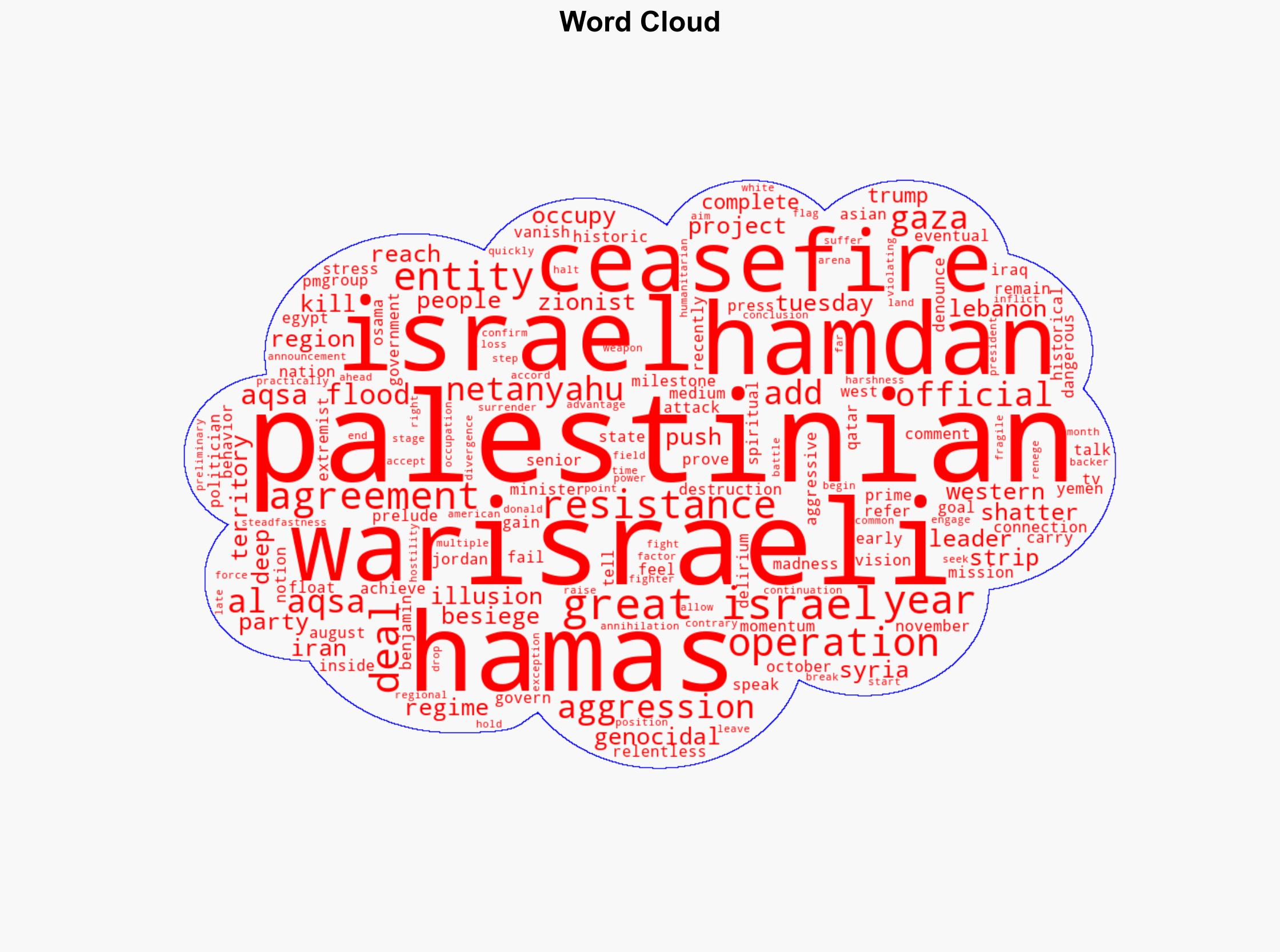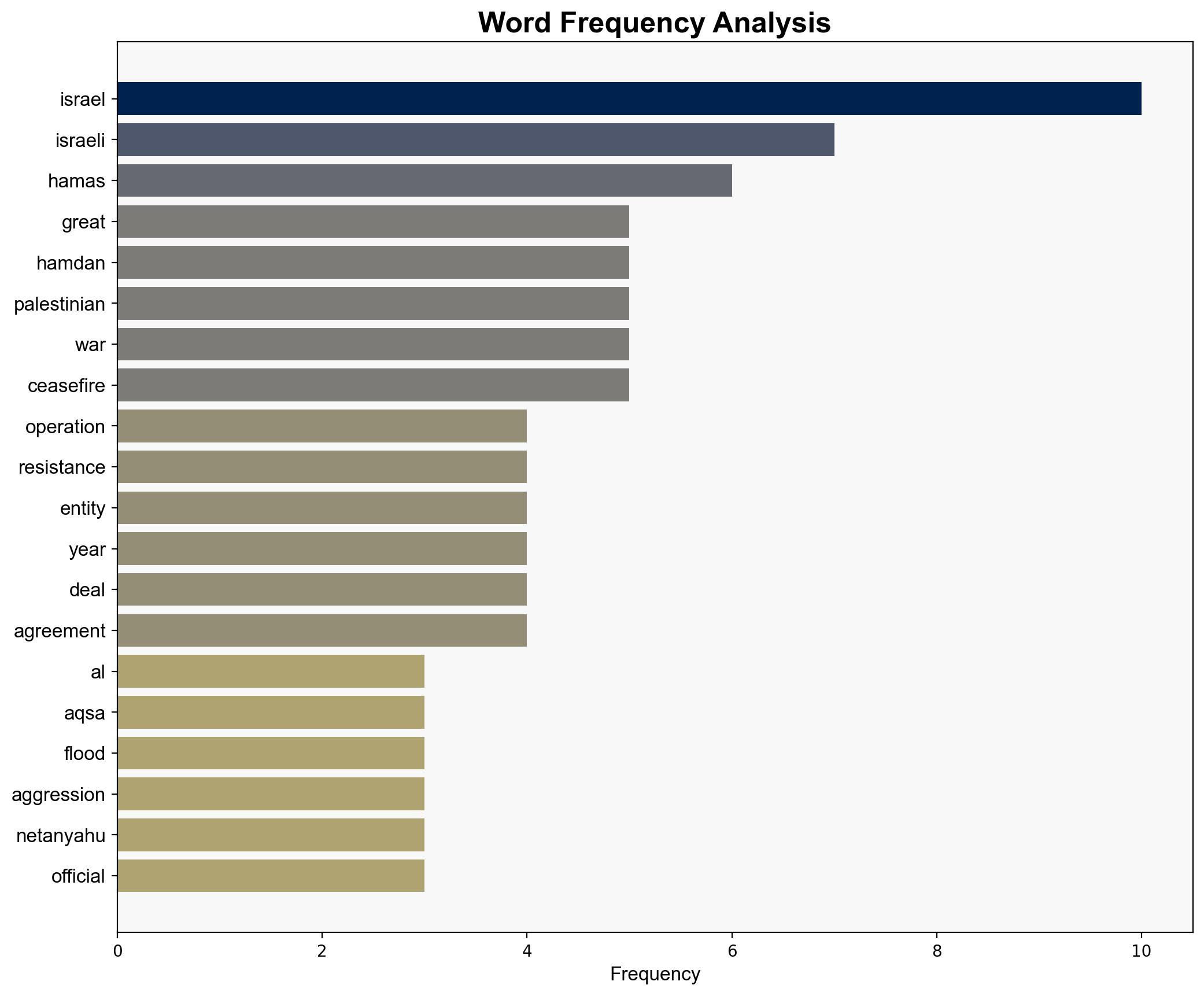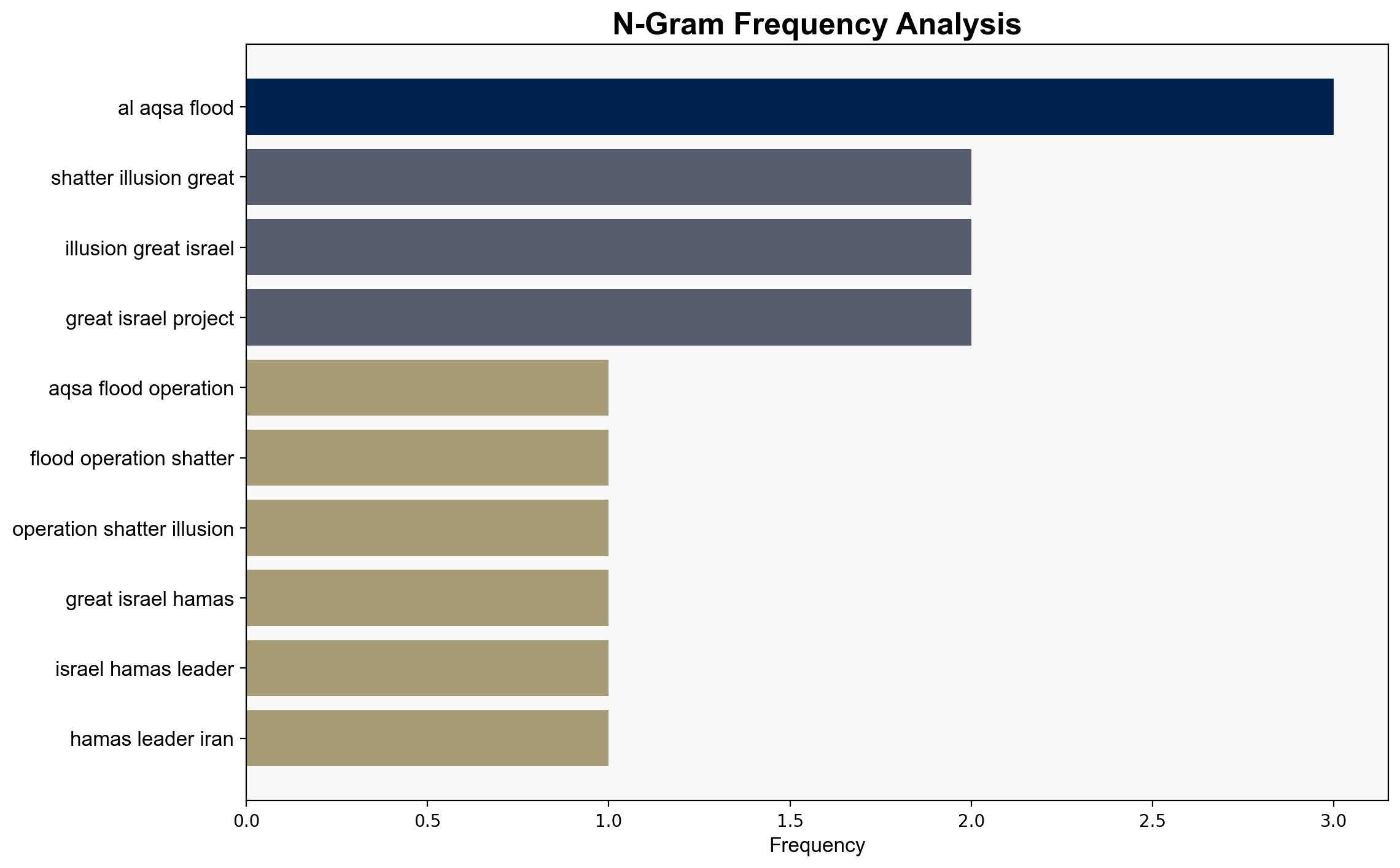Al-Aqsa Flood operation shattered illusion of ‘Greater Israel’ Hamas leader – Globalsecurity.org
Published on: 2025-11-12
AI-powered OSINT brief from verified open sources. Automated NLP signal extraction with human verification. See our Methodology and Why WorldWideWatchers.
Intelligence Report: Al-Aqsa Flood operation shattered illusion of ‘Greater Israel’ Hamas leader – Globalsecurity.org
1. BLUF (Bottom Line Up Front)
The Al-Aqsa Flood operation, as articulated by Hamas leader Osama Hamdan, is portrayed as a significant milestone in Palestinian resistance, challenging the concept of a ‘Greater Israel.’ The most supported hypothesis is that this operation aims to bolster Palestinian morale and international support by framing it as a strategic victory against Israeli expansionism. Confidence Level: Moderate. Recommended action includes monitoring shifts in regional alliances and preparing for potential escalations in conflict.
2. Competing Hypotheses
Hypothesis 1: The Al-Aqsa Flood operation is a genuine strategic victory for Hamas, effectively challenging Israeli territorial ambitions and altering regional power dynamics.
Hypothesis 2: The operation is primarily a propaganda effort by Hamas to boost internal morale and international support, with limited actual impact on Israeli strategic objectives.
Hypothesis 2 is more likely given the historical resilience of Israeli defense and political strategies, coupled with the limited tangible changes observed in territorial control or international policy shifts following the operation.
3. Key Assumptions and Red Flags
Assumptions: The analysis assumes that Hamas’s statements reflect genuine strategic intentions and that Israeli responses are consistent with past behaviors.
Red Flags: Potential bias in source material, given the political nature of the statements. Deception indicators include exaggerated claims of victory and impact without corresponding evidence of strategic shifts.
4. Implications and Strategic Risks
The operation could exacerbate regional tensions, leading to increased military engagements or proxy conflicts involving Israel and its neighbors. There is a risk of cyber and informational warfare as both sides seek to control narratives. Economically, prolonged conflict could disrupt regional trade and investment.
5. Recommendations and Outlook
- Enhance intelligence gathering on regional military movements and political alliances to anticipate potential escalations.
- Engage in diplomatic efforts to de-escalate tensions and promote dialogue between conflicting parties.
- Best-case scenario: Ceasefire agreements hold, leading to renewed peace talks.
- Worst-case scenario: Escalation into broader regional conflict involving multiple state and non-state actors.
- Most-likely scenario: Continued low-intensity conflict with intermittent ceasefires and violations.
6. Key Individuals and Entities
Osama Hamdan (Hamas leader), Benjamin Netanyahu (Israeli Prime Minister), Donald Trump (former U.S. President).
7. Thematic Tags
Regional Focus: Middle East, Israeli-Palestinian Conflict, Hamas, Israel, Geopolitical Strategy
Structured Analytic Techniques Applied
- Causal Layered Analysis (CLA): Analyze events across surface happenings, systems, worldviews, and myths.
- Cross-Impact Simulation: Model ripple effects across neighboring states, conflicts, or economic dependencies.
- Scenario Generation: Explore divergent futures under varying assumptions to identify plausible paths.
Explore more:
Regional Focus Briefs ·
Daily Summary ·
Methodology





